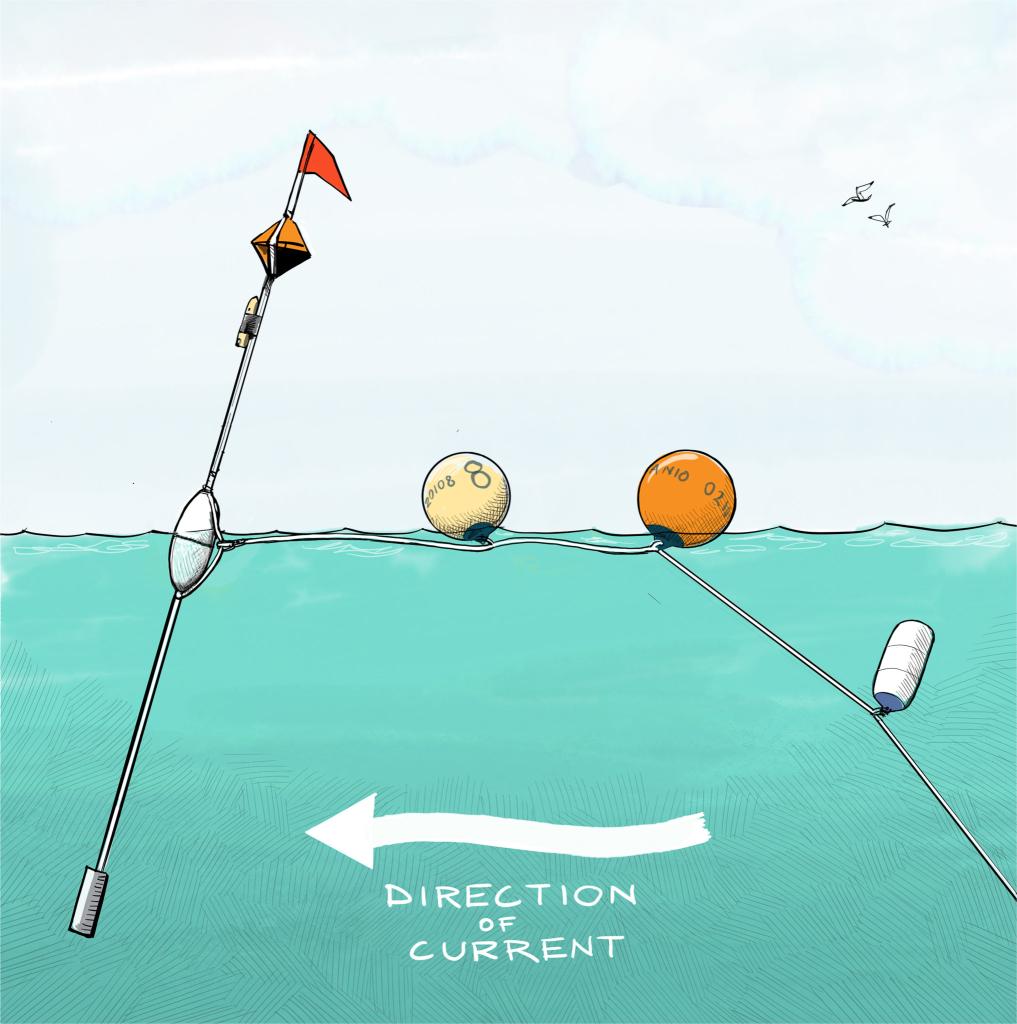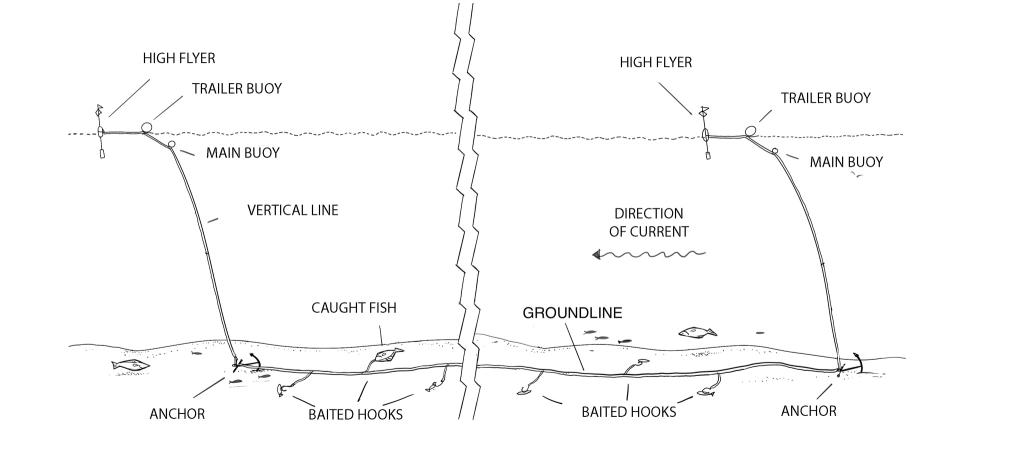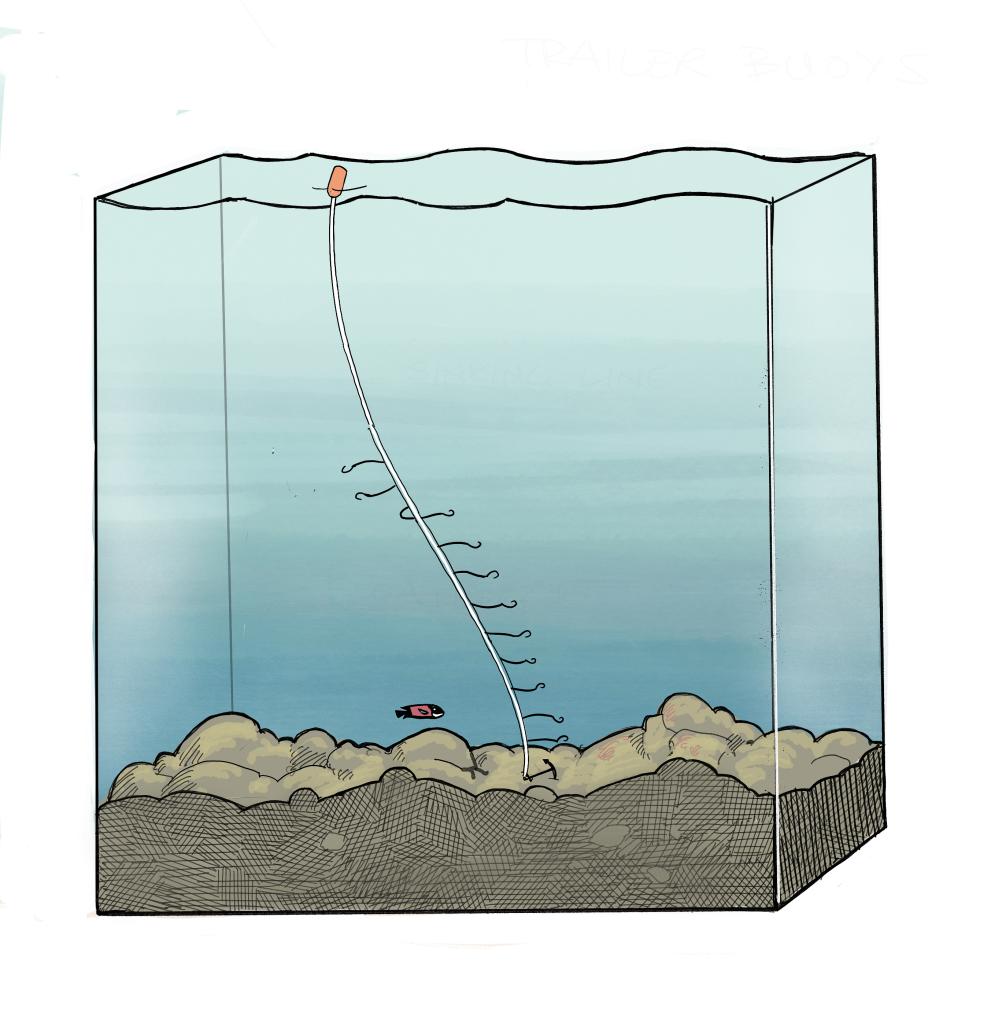
Two primary types of longline gear are used in West Coast commercial fisheries: demersal longlines and vertical longlines. They differ from other hook-and-line methods because they are anchored in place rather than drifting with currents.
Demersal longline
Demersal longline gear is used to target fish at or near the sea floor including sablefish (black cod), Pacific halibut, California halibut, lingcod, and rockfish. The gear consists of a long “main line” anchored to the seafloor with hooked short lines about three to four feet apart. The size of the hooks varies depending on the target species: sablefish and rockfish are targeted with smaller hooks, Pacific halibut with larger hooks. The gear is marked at the surface by buoys and tall metal poles with flags and radar reflectors marking each end of the longline.

The gear is left in place for two- to 12 hours to attract the target species and is then retrieved using a hydraulic block or winch to pull the line and catch onboard. Fish are removed from the line one at a time as they come onboard, and, if of legal size and marketable quality, are sorted and retained. Most fishermen will put whole fish on ice or, depending on the species, clean them prior to icing. Others will keep the fish alive in tanks with recirculating seawater to be sold as live product.

Vertical longline
Vertical longlines are similar to demersal longlines, with baited hooks on short lines attached at intervals to a main longline. However, as the name suggests, vertical longlines hang from the surface of the water down to the seafloor rather than along the ocean bottom. This orientation enables the capture of species that live at different water depths, sheephead, rockfish, or lingcod. A new type of vertical longline, deep-set buoy gear, is being used and evaluated for fishing swordfish.
